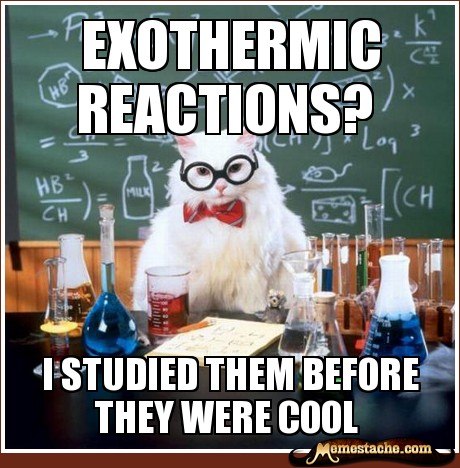
Chap 5 - 9 Review Paper 1 Q's
Quiz
•
Chemistry
•
2nd Grade
•
Practice Problem
•
Hard

Christina Vliet
Used 12+ times
FREE Resource
Enhance your content in a minute
40 questions
Show all answers
1.
MULTIPLE CHOICE QUESTION
3 mins • 1 pt
What is the volume of steam produced when 1.00 g of ice is heated to 323 degrees Celsius at a pressure of 101 kPa
0.27 dm3
1.3 dm3
2.7 dm3
48 dm3
2.
MULTIPLE CHOICE QUESTION
2 mins • 1 pt
Solid carbon dioxide, CO2, is similar to solid iodine, I2, in its structure and properties. Carbon is in Group 14. Silica, SiO2 is a group 14 compound. Which statement about solid CO2 and solid SiO2 is correct?
Both solids exist in a lattice structure.
Both solids have a simple molecular structure.
Both solids have atoms joined by single covalent bonds.
Both solids change spontaneously to gas at s.t.p.
3.
MULTIPLE CHOICE QUESTION
2 mins • 1 pt
An article in a science magazine contains the following statement. 'It is lighter than a feather, stronger than steel, yet incredibly flexible and more conductive than copper'. Which form of carbon is being described?
Buckminsterfullerine
Diamond
Graphene
Graphite
4.
MULTIPLE CHOICE QUESTION
2 mins • 1 pt
Which equation has an enthalpy change of reaction which corresponds to the enthalpy change of atomization of Chlorine?
1/2 Cl2(g) --> Cl(g)
1/2 Cl2(l) --> Cl(g)
Cl2(g) --> 2 Cl(g)
Cl2(l) --> 2 Cl(g)
5.
MULTIPLE CHOICE QUESTION
5 mins • 1 pt
In an experiment, 2.00 mol of hydrogen and 3.00 mol of iodine were heated together in a sealed container and allowed to reach equilibrium at a fixed temperature. The container had a fixed volume of 1.00 dm3. At equilibrium there were 2.40 moles of iodine present in the mixture.
Equation : H2(g) + I2(g) <--> 2 HI(g)
What is the value of the equilibrium constant, Kc ?
0.107
0.357
0.429
2.33
6.
MULTIPLE CHOICE QUESTION
2 mins • 1 pt
Which statement(s) about reversible reactions are correct?
1 An increase in concentration of a reactant always increases the concentration of the product
2 An increase in temperature always increases the rate at which equilibrium is established
3 An increase in temperature always increases the amount of the product at equilbrium
1, 2 and 3 are correct
1 and 2 are correct
2 and 3 are correct
only 1 is correct
7.
MULTIPLE SELECT QUESTION
2 mins • 1 pt
A chemist puts a sample of dilute aqueous hydrochloric acid into beaker 1. She adds a sample of zinc and measures the rate of production of hydrogen gas.
She then puts a different sample of dilute aqueous hydrochloric acid into beaker 2. She adds a different sample of zinc and measures the rate of production of hydrogen gas.
The rate of reaction in beaker 2 is greater than that in beaker 1.
Which factors could help explain this observation?
The reaction in beaker 1 has a higher activation energy than the reaction in beaker 2.
The zinc in beaker 1 is in larger pieces than the zinc in beaker 2.
The acid in beaker 1 is at a lower concentration than the acid in beaker 2.
Create a free account and access millions of resources
Create resources
Host any resource
Get auto-graded reports

Continue with Google

Continue with Email

Continue with Classlink

Continue with Clever
or continue with

Microsoft
%20(1).png)
Apple
Others
Already have an account?
Similar Resources on Wayground

36 questions
Kimia Tingkatan
Quiz
•
1st - 5th Grade

44 questions
UNITAT 2: massa, volum i densitat.
Quiz
•
2nd Grade

42 questions
M9 - GUIA 5
Quiz
•
1st - 3rd Grade

35 questions
Chemistry Year 8
Quiz
•
KG - 8th Grade

40 questions
LATIH-TUBI DMC1143
Quiz
•
1st - 3rd Grade

41 questions
TP Final Suprema
Quiz
•
1st - 5th Grade

44 questions
Tabla Periódica: G1, G2, G13-G18
Quiz
•
2nd Grade

40 questions
2º simulado quizizz
Quiz
•
2nd Grade
Popular Resources on Wayground

10 questions
Honoring the Significance of Veterans Day
Interactive video
•
6th - 10th Grade

9 questions
FOREST Community of Caring
Lesson
•
1st - 5th Grade

10 questions
Exploring Veterans Day: Facts and Celebrations for Kids
Interactive video
•
6th - 10th Grade

19 questions
Veterans Day
Quiz
•
5th Grade

14 questions
General Technology Use Quiz
Quiz
•
8th Grade

25 questions
Multiplication Facts
Quiz
•
5th Grade

15 questions
Circuits, Light Energy, and Forces
Quiz
•
5th Grade

19 questions
Thanksgiving Trivia
Quiz
•
6th Grade
Discover more resources for Chemistry

9 questions
FOREST Community of Caring
Lesson
•
1st - 5th Grade

14 questions
States of Matter
Lesson
•
KG - 3rd Grade

13 questions
Veterans' Day
Quiz
•
1st - 3rd Grade

10 questions
Charlie Brown's Thanksgiving Adventures
Interactive video
•
2nd - 5th Grade

20 questions
Multiplication Mastery Checkpoint
Quiz
•
1st - 5th Grade

20 questions
Subtraction Facts
Quiz
•
2nd Grade

20 questions
Multiplication Facts
Quiz
•
2nd - 3rd Grade

20 questions
Place Value
Quiz
•
KG - 3rd Grade
